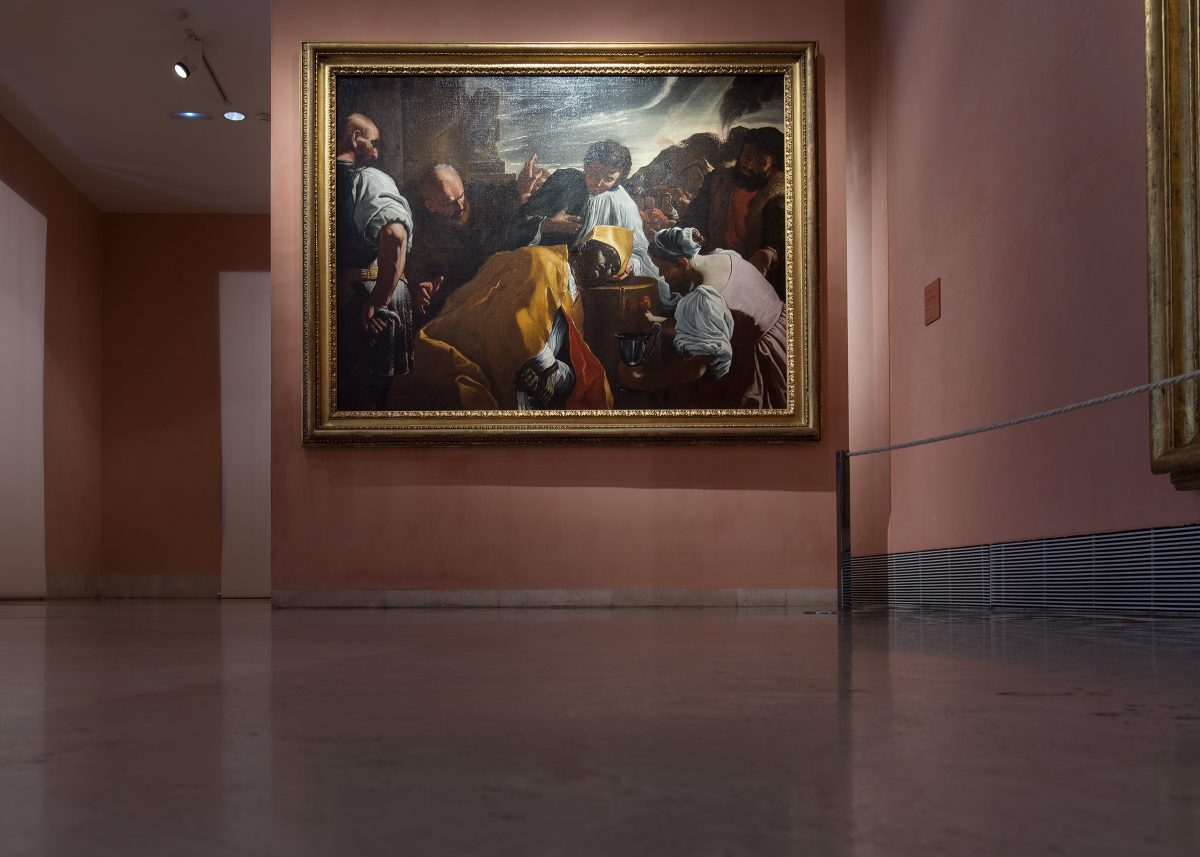
Museo Thyssen-Bornemisza
MUSEO 2021 — 2023
Authors know the fear of the blank page, the disapproving blink of the cursor, frozen in place. Painters know it too, the horror vacui, the panic when faced with the emptiness of a blank canvas. Photographers tend not to because there is always a counter-image in the viewfinder. It doesn’t have to be beautiful, but it’s there – unless of course, you forget to charge the battery or forget the shutter cap. Of course, this would never happen to a serious daguerreotypist.
Oliver Mark is tackling exactly this blankness – and doing it in the midst of art’s holiest temples, the museums and galleries. The places where blockbusters of art history usually hang exalted on the walls for pleasant contemplation. As a rule, the painting is placed at the center of the vanishing line, at eye level to the viewer, and typically in a heavy, decorative frame – as if the eye did not have enough visual guidance already. The painting is forced upon the viewer. And like airport architecture, the visitor’s path inevitably always ends up in the duty-free section of the canon of art, the artwork itself filling the spectrum of perception. It cannot be overlooked.
Mark, however, does overlook it, he positions his camera at floor level and takes pictures from a worm’s eye view, using only his wallet as a tripod. The angle of the lens and thus the view field is adjusted by adding or removing a few coins. If this is not a razor-sharp analysis of the art market and a biting critique of the interpretive sovereignty of money, then I’ll eat a critical complete edition of Bazon Brock. Or, maybe Mark just stumbled and fell, or found himself in the micro-world of the micro-verse like the physically shrinking protagonist in Jack Arnold’s classic film about 1950s paranoia, “The Incredible Shrinking Man.” Or, maybe Mark’s back just hurts and he’s making the best of the situation before getting to the osteopath. But I digress.
Regardless of how he arrived at this view field, his photographs alter our perception. Suddenly, other details move into the spotlight: electrical outlets, protective grilles, humidifiers, fire hoses, emergency exit signs, baseboards, spacers, and emptiness. The unexcitingness of whitewashed monochrome walls, cracked edges, or dark-colored walls that reveal only a small segment of the painting that the wall was built for. Instead of contemplating a de Chirico, I lose myself in the Capri blue of the wall paint dominant in the photograph. Just not acknowledging anything, just enjoying the chill-out zone of the Pantone rave, ignoring the gravitas of the painting, taking in the emptiness with my eyes.
This has more than a meditative effect, it recontextualizes the art. The moment you become aware of the supporting mechanisms of the presentation modus – the movable walls, barriers, motion detectors, benches – Benjamin’s aura of the original disappears. The work of art appears as a commodity alongside others: here a socket, there a Renaissance. One recognizes again that art functions similarly to paper money: Its artifacts are charged with meaning, but their material value is often relatively low. Their value lies in the common agreement that the art work in question is of relevance.
And in the angle of view. We are a visually driven species. Out of sight out of mind does not only apply to small children. We construct reality through the optic nerve much more than through feeling or hearing. The Iconic Turn and all that. If you take away the icons from the Iconic Turn, would it still exist? Or does Wazlawick’s verdict, that we cannot not communicate, also apply to art? You cannot not depict. Does that make Malevich’s Black Square naturalism, symbolism, abstraction or a preliminary study for the color swatches in the printing industry? We are fascinated by the magic of the simple, solid tone. Our brain is always searching for recognizability, and the absence of pattern is jarring. Staring at the wall: Oliver Mark has given new meaning to the idiom – and has made me want to view everything from a cross-legged seated position the next time I visit a museum.
Till Schröder, Editor-in-Chief of Marginalien and owner of the Gretanton Verlag.